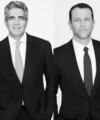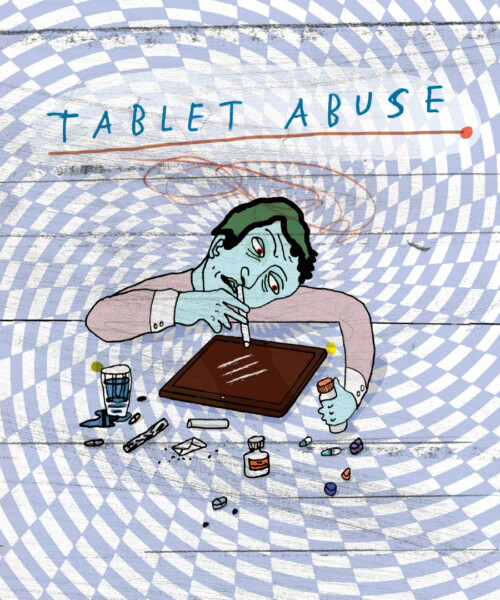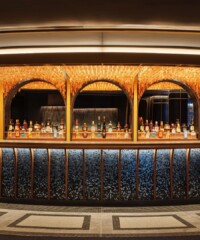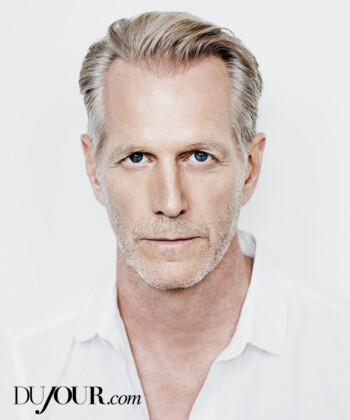Sometimes things get even more dangerous. According to Estes, when it comes to on-the-job use, heroin and prescription drugs have a more devoted following than uppers like cocaine, which comes into play after hours. “The interesting thing is, on the cocaine they really can’t work,” she says, citing the paranoia and distraction that come along with the drug. “But on heroin and [opiate prescriptions] they’re somewhat able to function. Heroin makes you warm and fuzzy, focusable and you can work. Are you super-productive? No. But you still can function.” That ability to maintain appearances often lets the behavior continue until a breaking point is reached. “No one really knows they’re using until they start missing work or they end up overdosing,” says Estes. This hints at the phenomenon of micro-dosing, which is particularly popular with psychedelics. Rather than getting fully high, with very low doses users are able to get the most of effects like increased focus, greater creativity and improved mood from a drug without becoming incapacitated.
This method is especially prevalent when it comes to somewhat retro indulgences like LSD or MDMA. “It’s escapism but with a different goal, to remove yourself temporarily from the perceived constraints around a problem,” says a former Google employee who, like many others in this story, asked for professional reasons not to be named. “When you put yourself in an alternate state of mind, you’re training yourself to think differently and find a potential business solution to a tech-world problem.” In that same vein are “smart drugs,” a class of supplements and pills popular in the tech industry and believed to improve concentration, focus and memory. Creating custom cocktails of the substances, which include the anti-narcolepsy prescription modafinil as well as natural supplements called nootropics, to maximize the cognitive benefits has become an obsession for many looking to enhance their work performance.
Computer programmer Jesse Lawler stumbled upon modafinil several years ago. Now he takes a constantly evolving mix in the neighborhood of 10 pills daily, which can include everything from fish oil to sulbutiamine, a synthetic form of vitamin B1, and the cognition enhancer aniracetam. “I don’t take the same thing everyday, and I feel like if I did it would just become the new normal,” he says. “But what I really like is feeling like I have my Batman tool belt of these different drugs, knowing how each one is going to affect me. Then depending on what my needs are for the day, as far as mental clarity, relaxation or whatever it is, I’ve got these little things to give me a boost in the direction I’m interested in.”
Substance abuse is nothing new and drugs have long been part of the tech industry’s DNA. Before today’s thriving party scene or Sean Parker’s infamous 2005 arrest for felony possession of cocaine, no less than Steve Jobs spoke about using psychedelics multiple times in the early 1970s, going as far as to say, “taking LSD was a profound experience, one of the most important things in my life.” Even the impossibly straight-laced seeming Bill Gates has himself confessed to a period of drug use in the early years of his career. (These days, things are a bit different; when approached regarding this story, Yahoo, Google and Apple all declined to comment on any policies for addressing substance abuse within their companies.)
While drug users go to lengths to keep their habits under the radar, it seems ironic that in many places alcohol is highly integrated into the workplace. Hosting cocktail hour can help boost an office culture, something that many new start-ups see as critical, and can also help blur the line between on and off hours. The software start-up Twilio, recently valued at $1.1 billion, features an office beer fridge and liquor cabinet, and the mixing of cocktails is said to often be underway by 5 p.m. Dropbox has weekly staff happy hours nicknamed Whiskey Fridays, and Yelp’s HQ boasts a keg refrigerator and a bottomless beer policy. Incidentally, a 2015 report shows Santa Clara County having California’s highest increase in binge drinking, with the counties of Santa Cruz and San Francisco falling not far behind.
Alcohol consumption might be popular across the board, but often times tech workers’ drug preferences depend on their professional specialties. “There’s an interesting balance between those companies that are intellectually curious and interested in ideas versus those that are kind of built around a bro culture,” says one tech entrepreneur who has seen colleagues partake in psychedelics with the aim of mind expansion. “If you’re in a sales position and you know you’re rewarded based on your ability to close a deal, you might exhibit Wolf of Wall Street–type behavior. If you’re an engineer and your job is to solve complex mathematical problems, you might [look for] experiences with MDMA.” Local lore holds that some leaders even go as far as actively fostering this behavior themselves; the entrepreneur mentions a start-up CEO who plans quarterly trips for his whole team to take acid together as a group.
To hear some industry engineers tell it, however, their advanced knowledge of the science of substances is a key element that allows them to enjoy themselves with an added layer of confidence. “I think engineers have a more scientific process by which they go about doing drugs,” says
an executive at a consumer-facing tech company, who recounts a colleague inviting him to partake in a batch of ketamine ordered off of the now-defunct online drug market Silk Road. “The way that they talked me into it was basically a chemistry lesson,” by explaining to him exactly what chemicals went into the drugs and the effect they would have on his body. Aiding others in feeling safer are dark-web services modeled off of Silk Road, which allow buyers to leave reviews and feedback evaluating the strains that they’ve purchased on things like purity and effectiveness.
This executive sees a good deal of forethought going into the drug habits of his friends and colleagues. “We’re talking about people that have a lot of science or math in their backgrounds [and] probably are willing to do more research,” he explains. “There are a lot of great resources online that talk about the chemistry [of drugs] and the known effects on your brain.”
Every individual has his own approach to drug culture, but there’s at least one common thread across the industry. “Silicon Valley is a really dynamic environment, and…everyone’s just working on a dream,” says Mark Onsager, a San Jose–based therapist, himself a recovering addict. “It’s very don’t-ask, don’t-tell as it relates to addiction.”
When a high-profile executive overdoses, it might make waves in the media, but when it comes to openly discussing the drug culture that seems to have the tech industry in a vice grip, that’s where the line is drawn. Asked whether it’s something people could ever talk about at some of the most progressive companies in the world, one entrepreneur laughs and says, “I don’t think we’re there yet.”










































